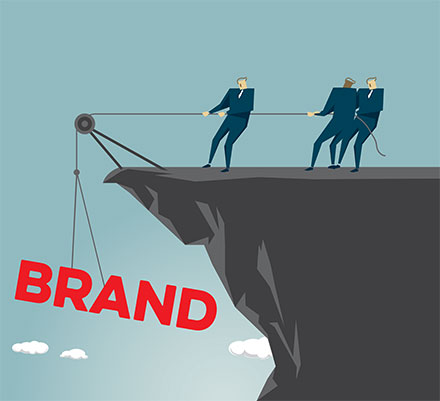The Value of Forced Change in Branding
Change is hard but a forced rebrand could be just what you need to take your organization to the next level.

Let’s face it. The timing for a rebrand isn’t always neat and tidy. Sometimes we’re not ready but we have to do it anyway. There are some benefits to the process even if it’s not by choice.
Why do we have to change?
There are lots of reasons why you might need to look at your brand from top to bottom and make tweaks or a wholesale overhaul. Mergers and acquisitions will force you to see which brands or sub-brands have the most equity—which to keep and which to lose. Market shifts or a change in products or services could have you trying to reach new or emerging audiences. Or vice versa—new audiences may have you adjusting your product mix. Staff and leadership changes can shift the story of how you do what you do.
And, worst-case-scenario, you might need to deal with some crisis management due to things like world events, copyright infringement, negligence, or lawsuits which will require a fresh start. In 2014, the banking app ISIS had to change their name due to unwanted associations with the terrorist organization. Not something they had any control over, but the change had to happen.
Each of these shifts in your business require you to look at your verbal and visual branding. Maybe you need a new name, logo, visual system, and/or message platform. Widgets-R-Us doesn’t work if you now sell Widgets and DooDads. Is your emerging audience a different demographic? Then they are going to respond to different brand stories and likely different visual representations of your brand.
What are the potential pitfalls?
The biggest pitfall is being too reactive to the situation. You’ll likely need to make some quick adjustments depending on your reason for change, but the best thing to do is engage in a strategic, methodical process to make sure you don’t miss anything. If you move too fast, you may be in line for another rebrand before you know it.
Start at the beginning to reestablish your vision, mission, and values. Agree on your new goals and objectives. Do an audit of your existing tools to see what works and what doesn’t. Then move on to your message platform. Establish the building blocks of your visual and verbal brand so you can apply it to all of the touchpoints with your audiences. Finally, decide what kind of launch you need. Is it an evolution or a revolution?
What will we get out of it?
A rebrand can bring many benefits to your organization. Obviously, you will have solved the problem that initiated the overhaul, but a fresh start will bring more than that.
First, you’ll have all new tools that are up-to-date and will work effectively. We all have stories of the presentation template that was created 10 years ago in version 1.0 and hasn’t kept up with software updates. Now, all your tools will be in tip-top shape and hopefully organized in a way that your entire team can access them.
Secondly, your team will be reenergized. Especially if you included them (as you should) in the rebranding process. The company story will reflect their story so it will be easy for them to spread it far and wide.
And thirdly, you’ll have the right content to connect with your audiences, new and old. Nothing will feel stilted or like you are trying to cram a square peg into a round hole because it will be targeted.
So, if you have to change, embrace it! Watch out for pitfalls but know that you’ll come out a more effective organization on the other side.
5 Signals Your Brand is Ready for Growth
How to know when it’s time to level up.
Brand Equity—Hold On or Move On?
Is it time to let your brand strategy go?
What to Ask Before Hiring a Branding Firm
Find the right partner for your project.



